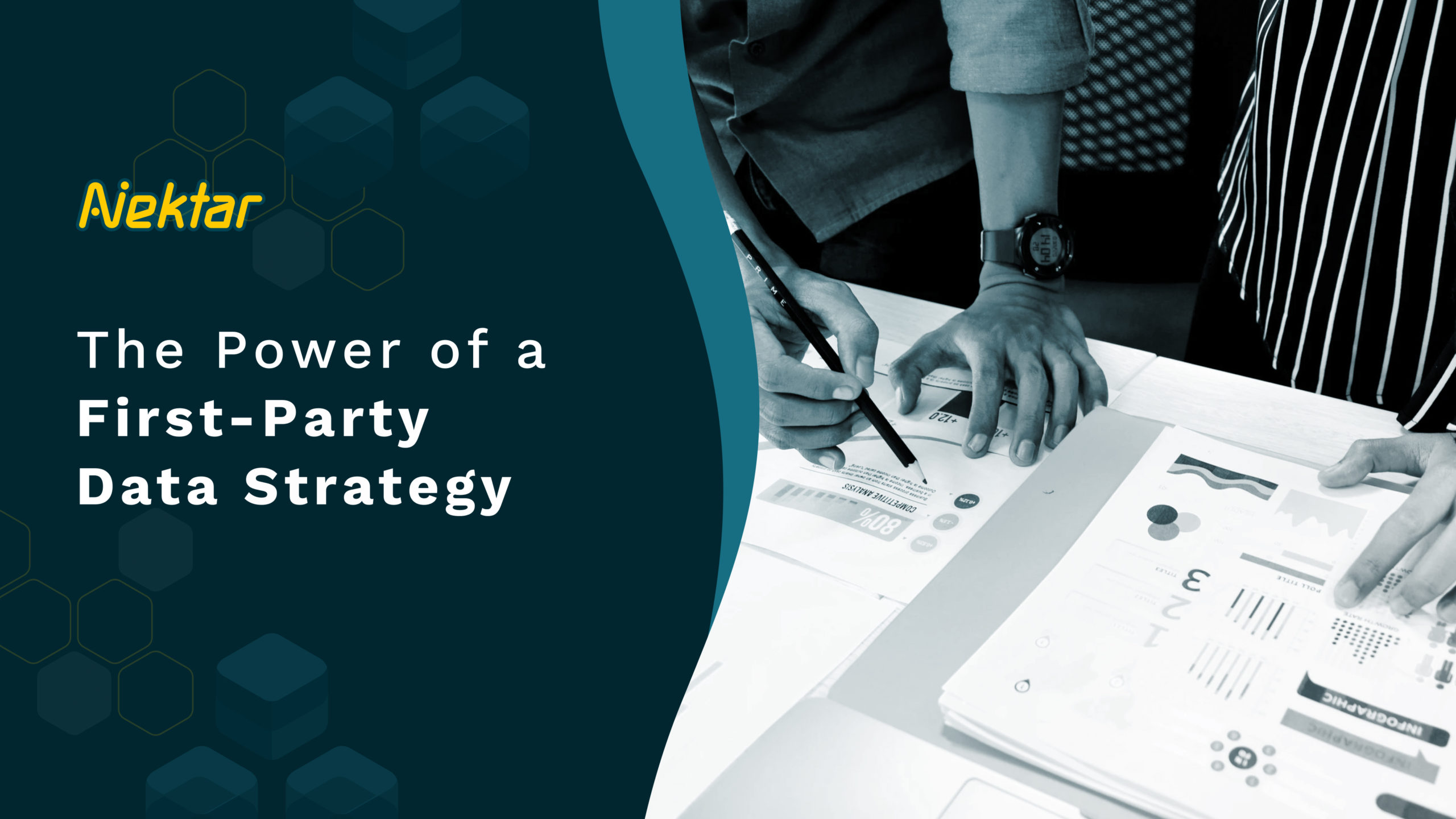
The Power of a First-Party Data Strategy
A first party data strategy is a must to identify sources of revenue leakage and devise successful data strategies. Read on to find how.
A lot of businesses have been relying on third-party data for years to target their buyers.
However, changes in data collection methods, an increase in privacy regulations and a move to a cookie-less world is forcing businesses to move away from reliance on third-party data.
This has shifted the focus to first-party data and its significance in driving revenues.
A study by BCG and Google found that first-party data-driven strategy can double revenue and increase cost savings by 1.6 times. Integrating first-party data into your revenue strategy can thus help you unlock massive gains for your business.
Before we get into the ways you can use first-party data to grow your business, let’s first understand what it really means and how it can impact growth.
What is First-Party Data?
First-party data is the data that your user shares directly with you. This can be their email id, phone number or other such information.
The source of first-party data can be website forms, CRM, surveys, customer feedback forms etc.
The key to remember is first-party data is the result of your direct relationship with the user. The user knows that their personal data is getting shared and they allow it to happen through their consent.
What is Second and Third-Party Data?
Second-party data is data that is not collected directly by the company, but taken from a secondary source.
For instance, you can partner with a company who has a similar audience like yours and benefit from the data that they already have.
Third-party data is aggregated and anonymized data that is usually collected from large third-party companies.
Such type of data is usually sold in bulk and divided into segments such as demographics, user behaviour, location etc.
Third-party data is questionable when it comes to adherence to privacy regulations or taking care of user consent. There is poor transparency in terms of how it’s obtained.
As opposed to first-party data, third-party data is also not exclusive and the same data can be purchased by your competitor from the same third-party source.
Why is Third-Party Data Risky?
There are two key reasons that hint towards the demise of third-party data. Let’s take a look.
– Increased regulations against third-party data
With more and more activities moving online since the pandemic, regulations around how companies can collect and use third-party data have changed.
Laws like the General Data Protection Regulation (GDPR), for example, have put restrictions on the collection and use of third-party data for business growth.
Additionally, Google announced that it will end third-party cookies in Chrome from 2023. Apple also updated its anti-tracking tech in Safari that blocks third-party cookies. Today’s Firefox browser also blocks third-party cookies by default.
All these regulatory changes will lower access to third-party data acquisition and distribution, and make it more risky with time.
– Third-party data is becoming increasingly unreliable
Today’s internet users are highly concerned about data privacy issues.
According to a study by KPMG, 87% of customers viewed data privacy as a human right. 54% of consumers said they are concerned about how companies are using their personal data.
Because of this concern, customers are not only displaying reluctance to share personal data, but are also fighting back by blocking cookies with ad-blocking software.
These changes are making third-party data highly unreliable to be used to steer data-driven strategies within companies.
Benefits of First-Party Data
As compared to second and third-party data, first-party data is highly valuable for a number of reasons:
1. Privacy-compliant
First-party data is collected with consent from your customers. Operating on it helps your business stay compliant with global data protection laws.
First-party data stays in the hands of those who collect it. This gives it more value and transparency over the way the data is used.
2. Unique
First-party data is exclusive, fresh and unique data available only to you. Other businesses do not have access to it, nor can they purchase it from another third-party source.
Because first-party data is unique to your customers, it gives you clear insights into your buyers. You can know the type of products or services they ultimately want.
3. Accurate
First-party data is more accurate than second or third-party data. The information is either provided directly by the customer, or is based on actual customer engagement with your business (email, website etc.).
Third-party data is obtained at a single point in time. It can decay as it sits in systems for long periods of time.
4. Low-cost
First-party data is very easy to obtain and much less cheaper than buying data from a third party. It comes into your systems automatically as you acquire more customers and collect contact and purchase information.
On the other hand, purchasing third-party data sources can be an expensive affair. And the quality of that data might compromise your privacy standards.
5. Marketable
Using first-party data insights to target buyers will help you create personalized experiences for them. You can understand their unique needs, desires and pain points.
This approach will convince your buyers that you have their best interest in mind, and that you are there to genuinely help them out.
Using highly relevant first-party contacts to run targeted ABM campaigns will lead to higher conversions. This improves account sales and accelerates opportunities for revenue growth.

How Companies are Using First-Party Data to Differentiate Themselves
Here are 3 examples of companies that leveraged the benefits of a first-party data driven strategy:
1. Eli Lilly and Company’s first-party data strategy helped increase ROI between 12% and 35%, depending on the marketing channel
Consumer’s right to privacy is the core of business for pharmaceutical company Eli Lilly’ for both the California Consumer Privacy Act (CCPA) HIPAA compliance.
They realized that people won’t share their information if they don’t see value in that exchange. Keeping customer trust at the core of what they do, Eli Lilly used a first-party data strategy to drive their marketing campaigns.
As a part of the strategy, they analyzed insights from various marketing channels where people engaged with the Eli Lilly brand.
By partnering with Google, they developed a digital transformation roadmap. This helped them identify which data sources were most helpful across the customer purchase journey (such as search behaviours and website interactions).
The company used this data to build a personalized, end-to-end customer journey across select marketing touchpoints for one of their diabetes brands.
The experiment worked. This personalized first-party data driven approach helped increase the brand’s ROI between 12% and 35%, depending on the marketing channel.
2. Nissan increased website customer requests by 5X at a 9X lower cost with a first-party data strategy
Automobile company Nissan devised a first-party data strategy to develop a direct relationship with automobile shoppers.
In 2020, Nissan offered compelling personalized content recommendations to online car researchers. The brand helped the researchers find the best dealership options near them.
They also created virtual showrooms to help these customers view cars on display from the safety of their homes.
Using advanced analytics and machine learning on their website data, Nissan fuelled personalized digital campaigns for their customers. People provided their contact information in request for test drives or to speak with experts at the dealership.
This value exchange resulted in increased trust in the business. It generated 5X higher test drive requests via first-party website contacts at a 9X lower cost.
3. A first-party data driven strategy delivered 20% of New York Times’ digital ad revenue
Digital ads that use the New York Times’ first-party data helped increase revenue from 7% in 2019 to 20% in 2020.
The publishing giant achieved this with its advertising data program for their direct-sold ads business. This first-party program was launched as an attempt to better protect readers’ privacy.
This program eliminated the dependence on third-party cookies or data. It focused only on what readers do on the website and mobile apps.
All the data captured through multiple events were batch processed and fed into multiple machine-learning models. The machine-learning models are primarily based on detailed survey respondents from readers.
Tens of thousands of readers volunteered to participate in the survey. The explicit messaging was that the information gathered would be used to improve advertising at The Times.
This first-party approach to advertising helped NYT increase their digital ad revenues. It also made them realize that ad campaigns targeted on first-party data perform really well. They were able to control the data they own and maintain the trust of their readers.
Looking Ahead
First-party data is the currency of the digital world. It can help you steer your growth by gaining your audience’s trust and staying compliant.
Category leaders have started utilizing their own first-party data to:
- drive revenues, and,
- build a direct relationship with their customers.
At Nektar, we can help you mine your first-party data and take it to the next level.
PUBLISHED BY






